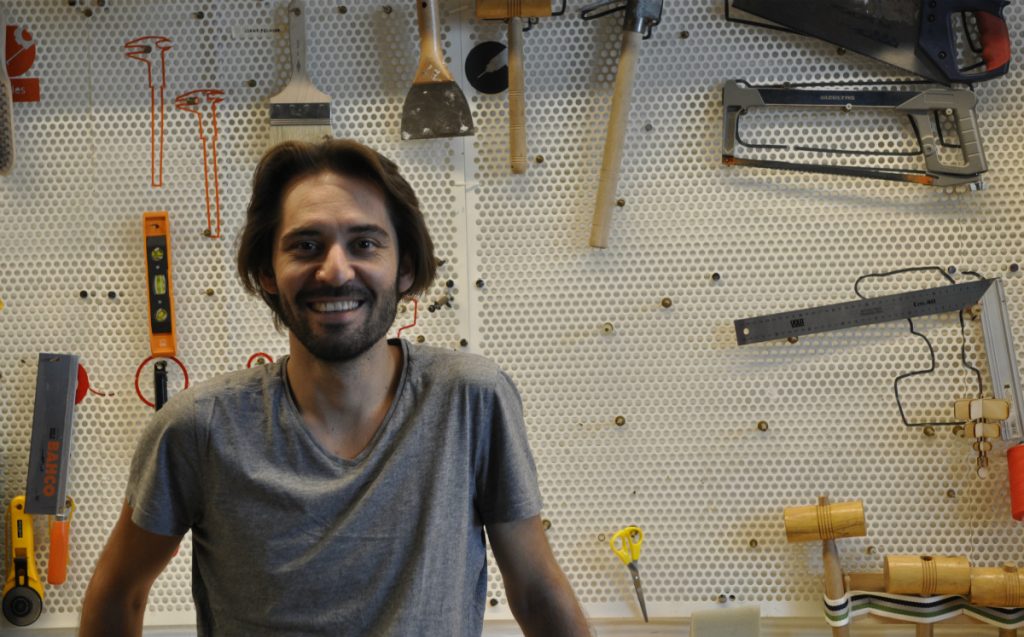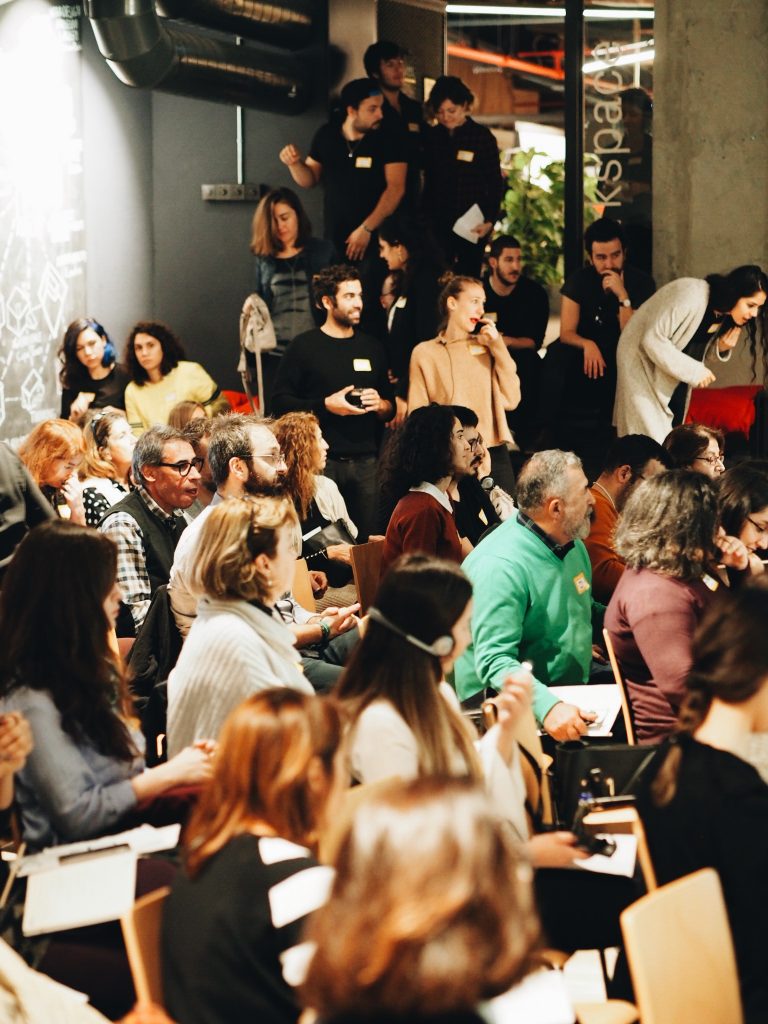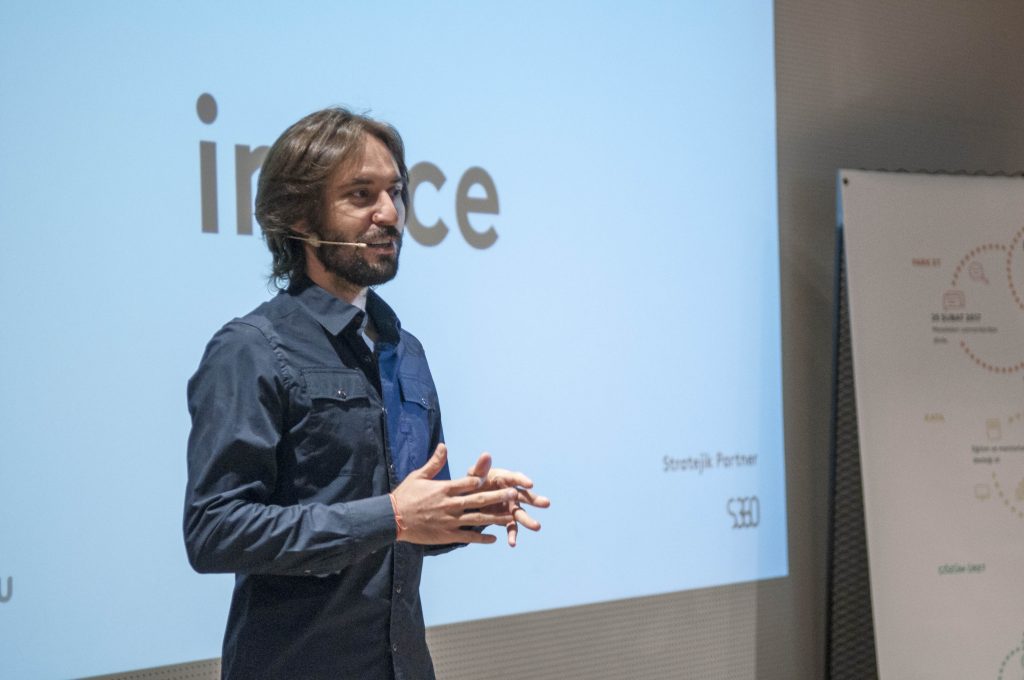The quintessential feel-good success stories are ones which diverge from the traditional path and incorporate elements that border on chance – gaining experience in the form of varying professional pursuits and eventually merging them in a way that clicks. Buğra Çelik is a first-hand representation of such a journey, eventually arriving to his seemingly predestined role as both the director behind the social innovation platform imece and chief operating officer of Ahtapot Apps, a private social networking tool for NGOs. In taking on these two projects, Buğra has drawn from a rich background of unique business undertakings, all of which have positively contributed to his current work ethic and mindset. Ahtapot Apps‘ conceptual framework and belief in the power of social networks shows strong connections to Buğra’s early community-building and networking days, while his desire to help fellow entrepreneurs and contribute to meaningful social and environmental impact through imece is evidenced in a personal ideology continually fostered along the way.
Buğra took some time to speak with us on the origins of his journey into entrepreneurship, the importance of both a proper team and community, the ethos behind imece and Ahtapot, the challenges inherent in these fields, and how all of it really does come together.

Could you tell us a bit about yourself and what brought you to Istanbul?
I grew up in Adana, and my mother is a teacher. I am from one of these generations in Turkey where you pushed yourself like a racehorse for exams. So I took all these exams in elementary, middle and high school. After high school I came to Istanbul to attend the Mechanical Engineering department at Istanbul Technical University, and it was actually my first time here.
After I started university I realized there wasn’t a huge emphasis on exams anymore. I had the opportunity to experiment on what to do next and realized I’m more of an entrepreneur. I started a couple of ventures during my first year. Then, I went to Las Vegas for a work and travel program. It was funny because it was from Adana to Istanbul and then Las Vegas. These were my first cities.
What was your experience like there and how did it start you on your professional path?
I really enjoyed it. I first worked at a car wash and at hotels and stuff. Then when I returned, I realized all my friends also wanted to go. I called the company in the states and requested agency to send my friends. I sent like 15 friends and ended up doing it as a business. For six years I facilitated cultural exchange with the University of California. With all these education-based businesses and students here, we were suddenly in the middle of it all. As we were students as well, we knew their needs and the best places to send them, so we just focused on Las Vegas, San Diego and Los Angeles. It was a really fast-growing business, but it put a huge pause on completing university.
I was also briefly involved with a Pedicab-style business which was also going quite well but my parents motivated me to shift my focus back to completing university. After the
economic crisis in 2008, I decided to move back to Istanbul full-time. Even in working with universities in California, I was still limited by not having finished my degree. So after returning and closing the doors on those pursuits, I tried finishing university, as I had two years of credits left to complete. I really chilled out, taking a break from always being connected via my phone, and focused on my well-being and on things like collecting antiques. We’d head to places like Tarlabaşı for the Sunday market at 4AM to get the best stuff. It gave me some time to explore myself and not rush through everything. I was able to read a lot, focus on philosophy, and spend some time on self-healing. Then in 2012, I finally managed to finish university. It had taken me ten years. [Laughter.]

Now that university was out of the way, what was your next project?
Shortly after, I met with some friends and we opened a digital advertising agency. We were doing a boutique business, but were mostly focused on storytelling and building a
community around those stories. We worked with Turkcell, Vodafone, and we had really great connections with our clients.
Following that, in 2014, I got an invitation to work on a political campaign in Ankara for a local election. It was a four-month commitment, and we weren’t sure we wanted to do it, but felt particularly empowered by recent national events and decided to meet with them to discuss it. We met with the candidate first just to be sure. It was a really great experience, but also painful. We seemed to be one of the only organized, professional groups involved. I had a chance to see the inner workings of how political campaigns are here and it was really eye opening. We had to focus on how to present our candidate to the public, as we wanted to win votes from all political sides.
After that, we did some agency work a little bit. We got involved with a mobile development business. They had engineers and asked to merge with us as a result of our creative team and customer relations. So they purchased us in 2015. So that’s how I became involved with mobile development. Then I started working on projects with Unilever, Akbank, Doguş Holding, etc. All these mobile projects were aiming to create a community based on their agenda. For Unilever we did a “baby and me” app. We let the mothers of newborns ask questions via the app. It was a huge success, as we used a slogan based on not wanting to ask mother-in-laws. [Laughter]
Now I had a new toy, a new layer of technology that I could experiment with. We were working on like more than 15 projects, feeling sort of like a factory. It wasn’t sustainable. We were putting in all this time and effort, then having to give the project away and often they weren’t taking it in a direction we would have.
So what did that mean for you?
We decided to make a private social network structure of our own. It was really expensive at the time to build something like that. So my business partners and I switched to this venture called Ahtapot in September of 2016. My business partner has a software background, but neither of us are actually really involved in coding. We had a non-competition agreement with our previous team, so we had to form a new team. In the end, we finally put forward a product we were proud of with the slogan “unleash the power of connected networks”.
With my experience in the local election campaigns, there were all these different demographics of people but we weren’t connected to so many of them because we have no sort of community for them. We need to build small networked communities to be more visible and be more connected and powerful. We had a shared revenue model, which worked really well for brands. It’s been slightly around a year, with more of a focus on already established communities to create value out of it. There’s so much importance in having a really good team in projects like imece and Ahtapot. I feel very lucky to have such a great team.
How did you find yourself at ATÖLYE?
My girlfriend is a fashion designer and has a project under her name, Ece Ozalp. We often work together and try to get involved in fashion festivals, art festivals and so forth. It was a
growing project and Ece was looking for a place to build her collection. It’s hard to open something like ATÖLYE for just yourself, and I knew Engin and Kerem [co-founders of ATÖLYE] before this place through their previous Beta Space. So we went and met with Atılım [Community Leader]. Everyone was really kind, they bought some necessary equipment for the MakerLab and she was able to build her collection there. I was based at ITU at the time, but coming here was like an oasis and when you start talking to people here, you realize it’s the community you’re looking for. A month later I decided to apply to become a member here.
I’m really impressed with how they run this place and how they attract like-minded people. In 2008, when I was returning to Istanbul, I was really excited. I knew what I was leaving behind in the USA and what I was looking for here. ATÖLYE really helped bring back this excitement. We were looking for chances to work together and when Kerem told me about the imece project, all of my local election experience and community experience kind of came forward. I really wanted to do it. The thing about imece is that it’s an impact project, or more like an impact project factory. We’re looking for entrepreneurial approaches to solve various problems. When you think of startups, they’re like viruses that use a lot of money quickly and feed on the market. This makes a lot of sense for approaching problems as well, using entrepreneurship style and the startup environment to move forward. It was supposed to be a part-time gig but now… [Laughter]
I feel very lucky to be here. My family background is that of farmers and, more recently, teachers, but everyone is connected to these Köy Institutes. These institutes really changed the lives of the people there and I think ATÖLYE has a similar meaning for people. I’ve been talking all my life about community and ATÖLYE does a great job of embodying this idea.

You’re an excellent advocate for the community here. It also seems to be relevant to much of your life’s work.
I think ATÖLYE is a very important model. When we do workshops at imece about social challenges in Turkey, many problems can be perceived as an advantage instead of a disadvantage. In that sense, having fewer open spaces in our urban life, it allows us to find values in these communities like ATÖLYE. I hope there’s a shift to focusing more on community rather than nationalities, technology, and so forth. We just have to come closer together and have some empathy.
Could you tell us a bit more about imece and this sense of community?
There are so many projects working with imece that help channel this hope. For example, one team of refugees from Gaziantep teaches about technology using robots to refugee youth. We have another team working with children who are in prison with their convicted mothers. They focus on how they can integrate educational programs. They try to connect on how these children can have a meaningful childhood while in prison and how they can reintegrate into society afterwards. We have a team working on the foster care system and how they can help children there. Another team is made up of foreigners living in Turkey and they focus on integrating refugee children here in Turkey.
When you look at the worldwide landscape of social innovation, you realize that the peaks of social problems also generate the peak of creative solutions. There are so many talented people who are working on solving these issues. It’s growing and growing.
Could you end by sharing a bit about some of the challenges inherent in this work?
When you try out a new model, you are boxed in by walls and you need to find the right people to work on that challenge together. Even if we have this collaborative history in Turkey in our past, we need to find this energy together again and try new things. For example, we are working with a corporation and ATÖLYE on an impact project. In the process, you have to educate yourself and learn how to better work together. In partnerships, it can be difficult to harmonize and build the connection. It can also often be hard to find young people who are passionate in the right areas, but this too is also changing.
As we’re an advice publication for foreigners living in Istanbul, are there any lesser known places or tips that you’d like to share with our readers?
I do have one suggestion actually. It’s in Cihangir, it’s called Heirloom. It’s actually in the very center of Cihangir but because of the road set-up, it’s a bit of a hidden gem. It’s on the other side of Otto, but you can’t go directly through it, instead you have to go around. They have great coffee, cake and other snacks.
To keep up with Buğra and learn more about is work, be sure to visit the official sites for imece and Ahtapot Apps. You can follow imece on Facebook, Twitter, Instagram, Medium, and Youtube.
ATÖLYE Spotlight is our series on the inspiring community members of Istanbul’s most creative space.
All images courtesy of Buğra Çelik.









